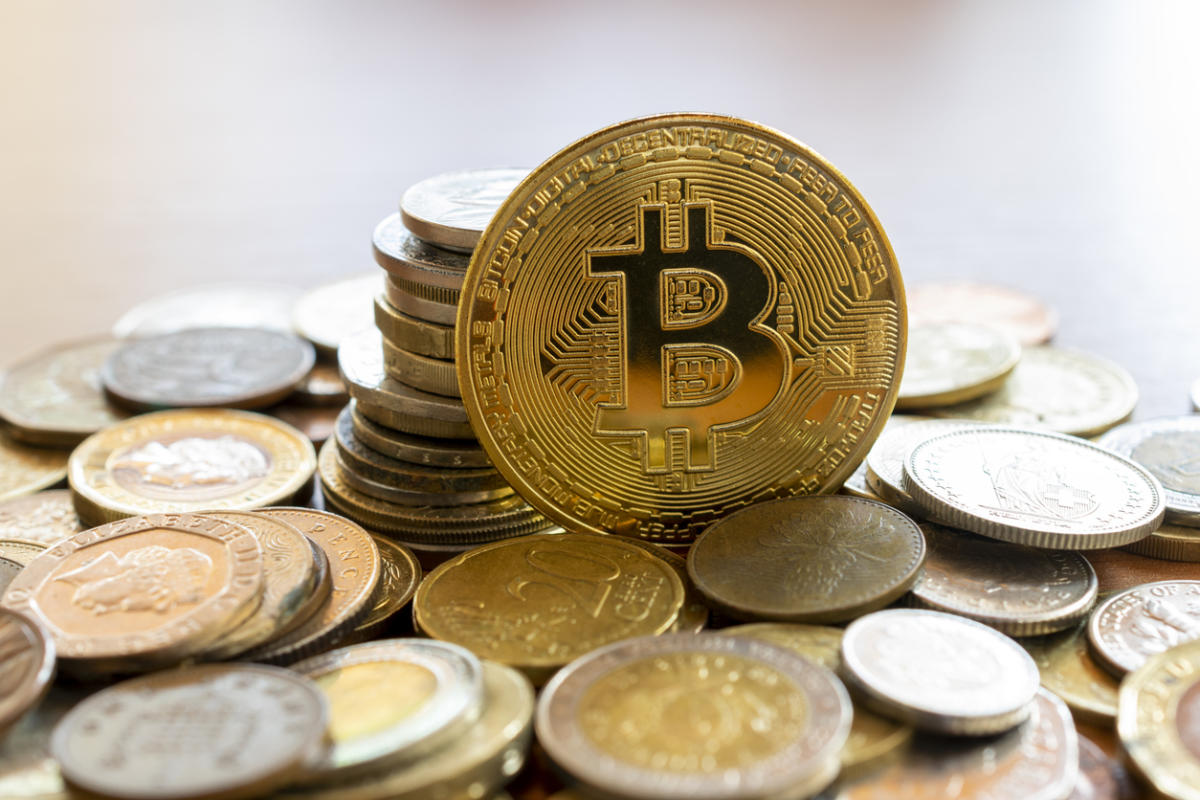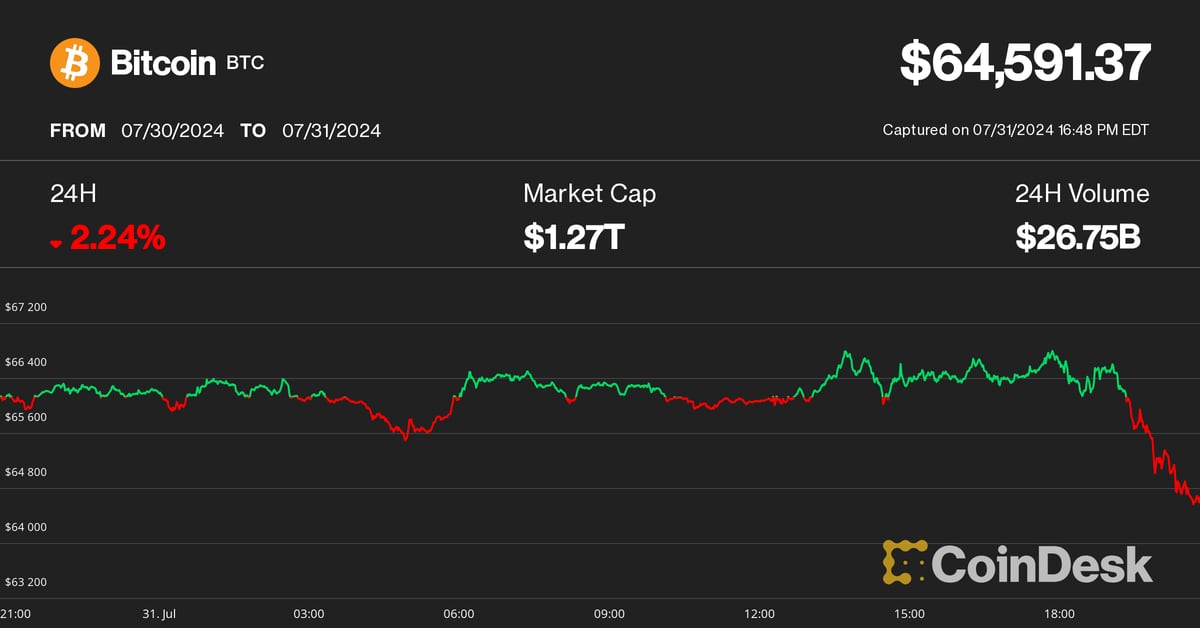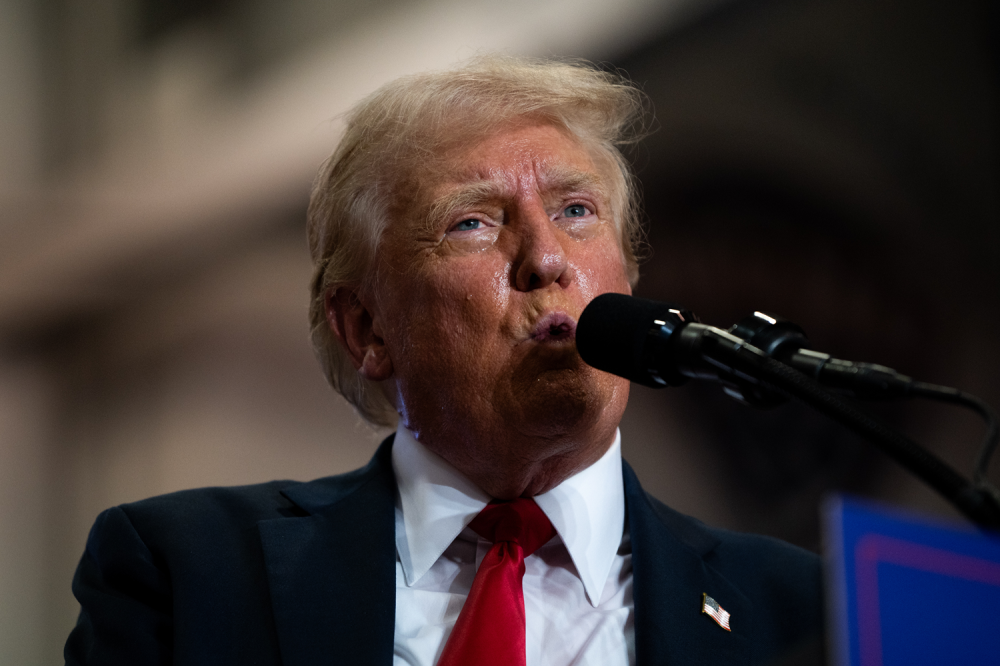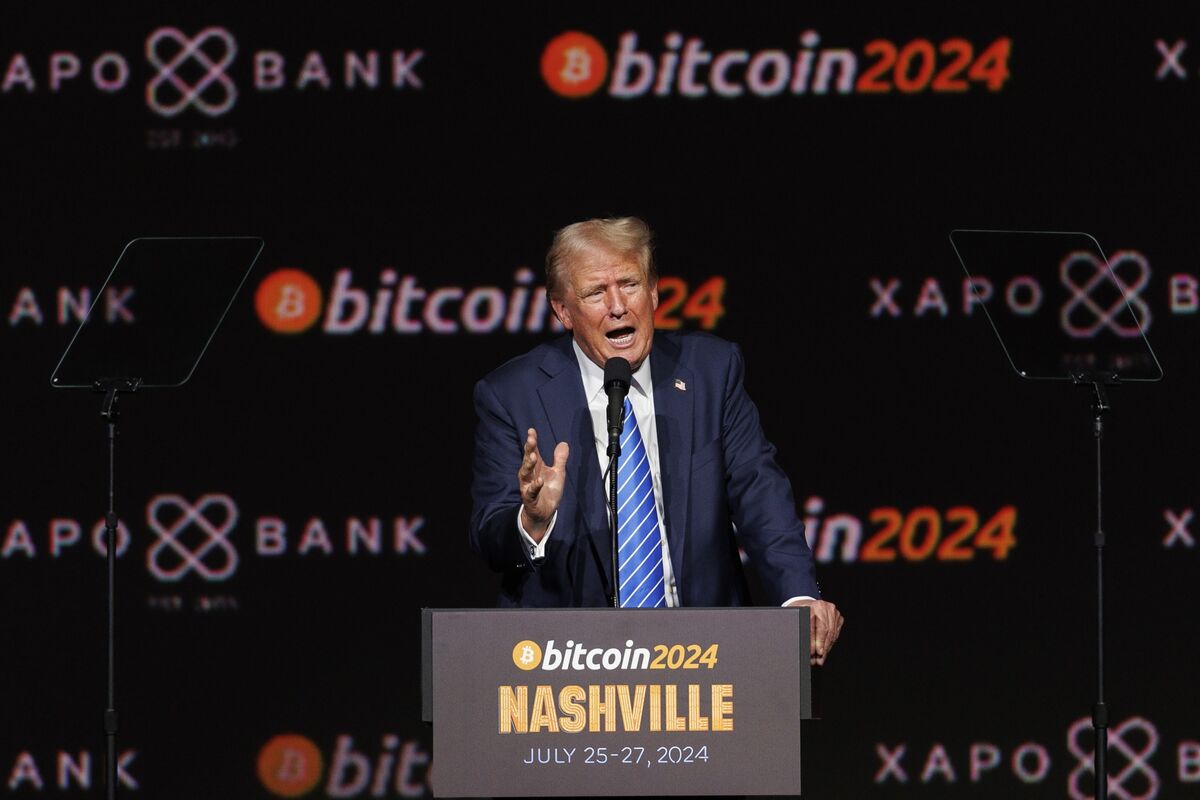Bitcoin
Why These Bitcoin Miners Are Becoming Summer’s Hot AI Stocks

Crypto miners are harnessing their advanced equipment and low-cost energy for the burgeoning artificial intelligence sector. As the demand for computational power soars, these miners are uniquely positioned to profit from the AI boom.
By Nina Bambysheva, Forbes Staff
Energy has become the hot commodity in the artificial intelligence world. Take cloud computing provider CoreWeave, which earlier this month inked a $3.5 billion deal with Core Scientific. The agreement involves CoreWeave paying $290 million annually over 12 years for the Austin-based bitcoin miner’s data centers to host AI-related computing hardware. CoreWeave will also cover all capital expenditures.
The deal was so good that Core Scientific’s stock doubled to $10 in early June, leading some observers to view the company as the new “picks and shovels” play for AI. On June 26, CoreWeave announced a second contract, this one projected to bring Core Scientific $1.2 billion in revenue in the coming years. Core Scientific emerged from bankruptcy in January and is one of the largest bitcoin miners in North America.
The soaring demand for heavy-duty computer capacity, driven by AI applications such as ChatGPT—its queries require 10 times the electricity of traditional Google searches—is putting a premium on companies like Core Scientific that have access to cheap power in states such as Texas and North Dakota and agreements to tap more energy from elsewhere. Having sufficient power available now is vital when you consider that building high-performance computing (HPC) data centers from scratch typically takes 3-5 years, with current wait times for electrical-grid connections stretching up to six, according to the Lawrence Berkeley National Laboratory research center.
Adam Sullivan, CEO of Core Scientific
Courtesy of Core Scientific
“The demand is insatiable,” says Adam Sullivan, Core Scientific’s CEO. “If we just execute on what is within our current contracted power today, we’d be a top 10 data center company in the United States hosting a very significant portion of AI that’s done in the United States over the coming years. We’ve been working very closely with Nvidia and a number of different partners on the development and design of what’s required to operate these chips.”
Since Core Scientific’s announcement of the first CoreWeave contract on June 3, the aggregate market value of 14 U.S.-listed bitcoin miners surged by 22%, according to research by JPMorgan, a stark contrast to the 12% decline in bitcoin and a 4% rise in the S&P 500.
The 14 miners control about 5 gigawatts of power and can spare 3.6 gigawatts of that for HPC, a June 24 research report by JPMorgan indicates. They also have purchase agreements for an additional 4.5 gigawatts from new power plants in various stages of construction and permitting.
That new energy is enough to support about 3.4 million households for a year, and it could come in handy. Driven by the AI boom, data centers’ energy demand could surge to 9% of U.S. power generation by 2030, according to the Electric Power Research Institute. This projected increase is more than double the current usage.
But the miners cannot easily repurpose their excess electric capacity for AI. “Near term, power is extremely hard to find in large quantities, and that’s the big asset a lot of the U.S. bitcoin miners have right now, but those power contracts are valuable if they have the other pieces that go along with it, primarily fiber connectivity,” says Wes Cummins, CEO of data center developer Applied Digital. Fiber-optic cabling is crucial in high-performance computing because it is what enables high-speed data transfers.
Kevin Dede, an analyst at H.C. Wainwright, notes, “Bitcoin purists will push back and say, ‘No, you can’t host AI machines in a bitcoin mining data center.’ Okay, I get it, you can’t. You need cleaner air and better cooling.” But smaller AI players that may not have an appetite for quite the same computing and power provided by hyperscalers—companies with massive data centers and cloud infrastructure such as Amazon’s AWS, Microsoft Azure and Google Cloud—could better integrate with the level of service range bitcoin miners are accustomed to delivering, which may ultimately lead to a bitcoin mining/HPC data center hybrid, he adds.
There is evidence that investors agree.
“Listed bitcoin mining stocks have re-rated during the past three weeks as the value of the miners’ power assets has come to the fore,” wrote Mark Palmer, an analyst at investment banking firm Benchmark, in a June 21 research note. “The average enterprise value/revenue multiple of a selected group of listed miners, including IREN, TeraWulf and BitDigital, is now at 7.8x, up from 5.2x two months ago.”
This is timely given the latest halving of the reward for adding a block to the Bitcoin blockchain. The reduction of the payment to 3.125 bitcoin has resulted in mining earnings reaching historic lows. In addition, the 10 miners that we found to be considering AI projects were all unprofitable last year, with bitcoin slowly recovering from the effects of the 2022 crypto winter and trading below the cost of mining it.
While Core Scientific is in the spotlight, several other miners have also been adjusting their operations to capitalize on the AI wave:
IREN
Formerly known as Iris Energy, IREN was one of the earliest companies to recognize the opportunity. JPMorgan calculates it is best positioned to take advantage of the HPC/AI demand, based on its track record of building high-quality data centers on time. The company also recently purchased 816 Nvidia H100 GPUs— arguably the most powerful chips for AI. “Outside of Core Scientific, IREN and maybe Hut 8, we haven’t really seen that level of materialized revenue coming from the AI business,” says Mike Colonnese, another analyst at H.C. Wainwright.
HUT 8
The Miami-based bitcoin miner announced a $150 million investment from Coatue Management, which has also backed CoreWeave, to build AI-related infrastructure. Coatue will buy a five-year note, which the company can extend for up to three years. The debt will pay 8%, and Coatue can convert it into stock, initially at $16.395 a share. That was a 45% premium when the deal was announced, but Hut 8 is now trading at $14.99.
Asher Genoot, CEO of Hut 8
Courtesy of Hut 8
“We want to work with partners that have scale or will be there for a long period of time for us to grow and continue building with, well-known names within the broader ecosystem and the AI sector, and we are in conversations with many of these counterparties,” says Asher Genoot, CEO of Hut 8. The key part of the equation is not only which companies will get an opportunity to address this market, but which companies will have the ability to deliver, and Hut 8 is one of them, he claims.
“Hut 8 has demonstrated its ability to stand up greenfield sites for energy assets and data centers relatively quickly and inexpensively,” agrees Benchmark’s Palmer. He rates Hut’s stock a buy with a $17 price target.
APPLIED DIGITAL
One of the first miners to pivot to building HPC data centers, Applied Digital recently signed a letter of intent with an unnamed U.S. hyperscale computing provider for a lease of 400 megawatts. The company’s Jamestown, North Dakota, facility is an interesting example of an attempt to balance mining and HPC efforts, according to H.C. Wainwright’s Dede—what’s becoming known as a mullet data center. Similar to the hairstyle, this kind of facility combines high-performance computing operations up front and bitcoin mining operations when there’s excess power capacity.
“I think people are very focused on power right now, but there’s a lot of other pieces that are very important if you want to transition your business from bitcoin mining to HPC,” says CEO Cummins, pointing out at wait times for key electrical gear of up to more than 2.5 years and competition for employees that has experience with large-scale data centers. “We spent a lot of time on this already. We’ve worked through the supply chain issues, we’ve picked up the experts. We really see ourselves as an HPC infrastructure company in the future.”
John Todaro, an analyst at Needham, named Applied Digital its top pick for HPC/AI while also highlighting IREN, Core Scientific, TeraWulf, Bitdeer, Hut 8, Bit Digital and HIVE Digital Technologies.
Bitcoin Miners Go AI
For the more pure plays, like Riot, CleanSpark and Marathon Digital Holdings, the three largest U.S. bitcoin miners by market capitalization, traditional crypto motivations remain strong. Bitcoin is near all-time highs, and supports like rising macro and political uncertainty are unlikely to fade soon.
“I think the optimal use of our resources is to focus on bitcoin mining and helping share the positive relationship to energy. Not only does it help stabilize the power grid, but it’s the future of money and there is a finite amount that will ever be mined. Some of our data centers could support HPC but we believe we are making a more positive impact and achieving success under our current strategy,” said Zach Bradford, CEO of CleanSpark, in a statement to Forbes.
Marathon has actually expanded its mining activities by adding kaspa (KAS), a proof-of-work digital currency, to its portfolio. “By mining kaspa, we are able to create a stream of revenue that is diversified from bitcoin, and that is directly tied to our core competencies in digital asset compute,” said Adam Swick, Marathon’s chief growth officer, in a statement shared on the company’s website. In March Forbes included Kaspa in its list of zombie blockchains because of little discernable use.
CleanSpark earlier this month announced it had added five mining sites in Georgia, worth $25.8 million, and on June 27 said it agreed to buy peer Griid Infrastructure in an all-stock deal valued at $155 million. Riot, meanwhile, is trying to take over rival Bitfarms via a proxy battle.
Investors in pure play mining should be a little bit more cautious, warns the analyst known on X as pennyether. “They’re sort of already pricing in a rally in bitcoin, but if it doesn’t happen, say we held to $60,000 per bitcoin for another year, I have to imagine that a lot of the mining stocks are going to take a substantial haircut.”
Sure, it’s hard to break into a new, highly complex industry, writes Colin Harper, head of content and research at bitcoin mining services firm Luxor Technologies, and “it becomes even more difficult when you consider that miners will be competing with some of the largest, most heavily capitalized tech companies on the planet.”
It could cost upward of $10 million per megawatt to build out AI data center infrastructure, while bitcoin mining sites’ megawatt cost between $300,000 to $500,000, according to H.C. Wainwright’s Colonnese. “The market has typically responded well to anything with AI but these are very capex-intensive builds, and you have to get them right,” he says.
Still, a shift to AI operations for those with available infrastructure and energy capacity offers potentially compelling benefits. By replacing the volatility of bitcoin with more stable revenue from AI computing, miners can benefit from predictable budgets funded by established customers. This also helps miners boost income to be able to afford the high capital investment necessary to stay competitive with new mining equipment, concluded analysts at Morgan Stanley in an April report.
“The truth is that AI companies can pay more for that power because they don’t care. Their business model is stronger. With bitcoin mining, you have no idea what the price of bitcoin is going to be or how hard it’s going to be to mine one, so you’re taking a lot more risk,” says Dede.
Morgan Stanley’s report highlighted multiple miners’ sites suitable for conversion to data centers, including locations in Texas, Georgia, Canada, the United Arab Emirates and Bhutan. Most miners that are seeking to retrofit will be looking at capital expenditures north of $6 million per megawatt, according to Needham analysts.
For many mining companies, getting a piece of the high-performance pie is too lucrative an opportunity to pass up.
“It doesn’t mean miners will completely revamp their businesses,” says Phil Harvey, CEO of Sabre56, a hosting provider and digital-asset-mining consultancy. “They’ve already put a lot of money, time and effort into crypto and some of those sites are only going to be good for crypto.” But “it’s foolish not to be offering this up as a business,” he adds. “That opens up your investment universe a lot wider, private equity firms that are climbing over themselves to invest in HPC/AI because investors are saying ‘I want to be in this.’”
MORE FROM FORBES
ForbesA Noisy Office Is A Nuisance-And A Business OpportunityBy Jena McGregorForbesHackers Are Now Coming For Your Airline Miles And Hotel PointsBy Jeremy BogaiskyForbesHere Are Biden’s Top 10 Biggest Billionaire DonorsBy Leo KaminForbesHere Are Trump’s 10 Biggest Billionaire DonorsBy Leo KaminForbesHow AI Is Distorting The Returns Of Vanguard’s Largest ETFsBy Mitchell Martin
Bitcoin
Grayscale Unveils Bitcoin Mini Trust ETF

Bitcoin Currency
Grayscale Investments The Bitcoin Mini Trust began trading on Wednesday with a 0.15% expense ratio, offering a lower-cost option for bitcoin exposure in the market.
The Mini Trust, which has the symbol BTC and trades on NYSE Arca, is structured as a spin-off of the Grayscale Bitcoin Trust (GBTC). New shares will be distributed to existing GBTC shareholders with the fund contributing a portion of its bitcoin holdings to the new product. According to a company press releaseBTC’s S-1 registration statement became effective last week.
“The Grayscale team has believed in the transformative potential of Bitcoin since the initial launch of GBTC in 2013, and we are excited to launch the Grayscale Bitcoin Mini Trust to help further lower the barrier to entry for Bitcoin in an SEC-regulated investment vehicle,” said David LaValle, Senior Managing Director and Head of ETFs at Grayscale.
The Bitcoin Mini Trust’s debut comes amid growing interest in ETFs based on the current price of the two largest cryptocurrencies by market cap, bitcoin and ether. Spot bitcoin ETFs have generated nearly $18 billion in inflows since the first ones began trading on Jan. 11, though GBTC has lost nearly $19 billion in assets.
This fund differs from other funds because it is a conversion of an existing fund and has a 1.5% fee, the highest among spot bitcoin products that have received SEC approval this year.
Mini Bitcoin Trust Low Fee
On a Post X On Wednesday, Bloomberg senior ETF analyst Eric Balchunas noted the Bitcoin Mini Trust’s “lowest fee in the category…”
“[Important] to recognize how incredibly cheap 15bps is — about 10x cheaper than spot ETFs in other countries and other vehicles,” Balchunas wrote, adding that this pricing strategy reflects the competitive nature of the U.S. ETF market, which he referred to as the “ETF Terrordome.”
“This is what Terrordome does to fund [cost]. It reaches 1.5% [and] end in 0.15%, how to go from [a] country club to the jungle. But that’s why all the flows are here, investor paradise,” he noted.
Read more: Spot Bitcoin ETF Inflows Hit Daily High of Over $1 Billion
Bitcoin was recently trading at around $66,350, virtually flat since U.S. markets opened on Wednesday.


Grayscale also offers two spot Ethereum ETFs, the Grayscale Ethereum Trust (ETHE) and the Grayscale Ethereum (ETH) Mini Trustwhose performance is based on ETHE. ETHE outflows exceeded $1.8 billion in its first six days of trading, while ETH added more than $181 million in the same period, according to Farside. The remaining seven ETFs generated about $1.2 billion in inflows.
The story continues
Read more: Spot Ethereum ETFs Approved to Start Trading
Permanent link | © Copyright 2024 etf.com. All rights reserved
Bitcoin
Bitcoin (BTC) Price Drops Below $65K After FOMC as Middle East Tensions Rise

Cryptocurrencies fell sharply on Wednesday as rising geopolitical risks captivated investors’ attention following the conclusion of the Federal Reserve’s July meeting.
Bitcoin (BTC) fell to $64,500 from around $66,500, where it traded following Federal Reserve Chairman Jerome Powell’s press conference and is down more than 2% in the past 24 hours. Major altcoins including ether (ETH)sunbathing (SUN)Avalanche AVAX (AVAX) and Cardano (ADA) also fell, while Ripple’s XRP saved some of its early gains today. The broad cryptocurrency market benchmark CoinDesk 20 Index was 0.8% lower than 24 hours ago.
The liquidation happened when the New York Times reported that Iran’s leaders have ordered retaliation against Israel over the killing of Hamas leader Ismail Haniyeh in Tehran, raising the risk of a wider conflict in the region.
Earlier today, the Fed left benchmark interest rates unchanged and gave little indication that a widely expected rate cut in September is a given. The Fed’s Powell said that while no decision has been made on a September cut, the “broad sense is that we are getting closer” to cutting rates.
While digital assets suffered losses, most traditional asset classes rose higher during the day. U.S. 10-year bond yields fell 10 basis points, while gold rose 1.5% to $2,450, slightly below its record highs, and WTI crude oil prices rose 5%. Stocks also rallied during the day, with the tech-heavy Nasdaq 100 index rebounding 3% and the S&P 500 closing the session 2.2% higher, led by 12% gains in chipmaker giant Nvidia (NVDA).
The different performances across asset classes could be due to traders’ positioning ahead of the Fed meeting, Zach Pandl, head of research at Grayscale, said in an emailed note.
“Equities may have been slightly underutilized after the recent dip, while bitcoin is coming off a strong period with solid inflows, while gold has recovered after a period of weakness,” he said.
“Overall, the combination of Fed rate cuts, bipartisan focus on cryptocurrency policy issues, and the prospect of a second Trump administration that could advocate for a weaker U.S. dollar should be viewed as very positive for bitcoin,” he concluded.
UPDATE (July 31, 2024, 21:30 UTC): Adds grayscale comments.
Bitcoin
Donald Trump’s Cryptocurrency Enthusiasm Is Just Another Scam

Former US President Donald Trump spoke at the Libertarian National Convention in May and lent his a strong support to crypto: “I will also stop Joe Biden’s crusade to crush crypto. … I will ensure that the future of crypto and the future of bitcoin is made in the US, not taken overseas. I will support the right to self-custody. To the 50 million crypto holders in the country, I say this: With your vote, I will keep Elizabeth Warren and her henchmen out of your bitcoin.”
Former US President Donald Trump spoke at the Libertarian National Convention in May and lent his a strong support to crypto: “I will also stop Joe Biden’s crusade to crush crypto. … I will ensure that the future of crypto and the future of bitcoin is made in the US, not taken overseas. I will support the right to self-custody. To the 50 million crypto holders in the country, I say this: With your vote, I will keep Elizabeth Warren and her henchmen out of your bitcoin.”
Trump continued to court the cryptocurrency industry in the months that followed; he he appeared at the Bitcoin 2024 Conference in Nashville this week, along with independent presidential candidate Robert F. Kennedy Jr.’s parting words to Trump — “Have fun with your bitcoin, your cryptocurrency and whatever else you’re playing with” — were less than enthusiastic, but the industry itself remains packed with ardent Trump supporters.
This turnaround came as a surprise, given Trump’s previous strong opposition to cryptocurrency. When Facebook was floating its Libra cryptocurrency in 2019, Trump tweeted: “I am not a fan of Bitcoin and other cryptocurrencies, which are not money, and whose value is highly volatile and based on thin air.” Former national security adviser John Bolton’s White House memoir, The Room Where It Happened, quotes Trump as telling Treasury Secretary Steven Mnuchin: “Don’t be a trade negotiator. Go after Bitcoin.” [for fraud].” In 2021, Trump counted Fox Business that bitcoin “just looks like a scam. … I want the dollar to be the world’s currency.”
Why the change? There doesn’t seem to be any crypto votes. Trump’s “50 million” number comes from a poorly sampled push survey by cryptocurrency exchange Coinbase which claimed 52 million cryptocurrency users in the United States starting in February 2023. But one survey A survey conducted last October by the US Federal Reserve showed that only 7% of adults (about 18.3 million people) admitted to owning or using cryptocurrencies — down from 10% in 2022 and 12% in 2021. Many of these people are likely wallet owners who were left holding the bag after crypto plunged in 2022 — and are not necessarily new fans.
What Trump wants from the cryptocurrency industry is money. The cryptocurrency industry has already raised more than US$ 180 million to run in the 2024 US elections through his super PACs Fairshake, Defend American Jobs and Protect Progress.
Fairshake spent $10 million on taking Rep. Katie Porter in the primary battle for Dianne Feinstein’s California Senate seat by funding Porter’s pro-crypto rival Adam Schiff. This put $2 million to knock out Rep. Jamaal Bowman in the Democratic primary for New York’s 16th District in favor of pro-crypto George Latimer. In the Utah Senate Republican primary, Rep. John Curtis defeated Trent Staggs with the help of $4.7 million from Defend American Jobs. In Alabama’s House District 2, the majority of campaign expenses came from the cryptocurrency industry.
Fairshake is substantially financed by Coinbase, cryptocurrency issuer Ripple Labs, and Silicon Valley venture capital firm Andreessen Horowitz, or a16z. Silicon Valley was awash in cryptocurrencies during the 2021 bubble, and a16z in particular continues to promote blockchain startups to this day — and still holds a huge amount of bubble crypto tokens that he wishes he could cash in on.
Many in Silicon Valley would like an authoritarian who they think will let them run wild with money — while bailing them out in tough times. Indeed, Trump promised Bitcoin 2024 participants that he hold all bitcoins that the United States acquires. (Never mind that it is usually acquired as the proceeds of crime.) Silicon Valley explicitly sees regulation of any kind as its greatest enemy. Three a16z manifestos — “Politics and the Future” It is “The Techno-Optimist Manifesto” and 2024 “The Small Tech Agenda—describe co-founders Marc Andreessen and Ben Horowitz’s demands for a technology-powered capitalism unhindered by regulation or social considerations. They name “experts,” “bureaucracy,” and “social responsibility” as their “enemies.” Their 2024 statement alleges that banks are unfairly cutting off startups from the banking system; these would be crypto companies funded by a16z.
Trump’s vice presidential pick, Senator J.D. Vance, is a former Silicon Valley venture capitalist. He was once employed by Peter Thiel, who bankrolled Vance’s successful 2022 Senate run; Vance has been described as a “Thiel creation”. He has increased support for the Trump ticket among his venture capital associates. Vance is a bitcoin holder and a frequent advocate of encryption. He recently released a draft bill to review how the Securities and Exchange Commission (SEC) and the Commodity Futures Trading Commission (CFTC) control crypto assets. In 2023, he circulated a bill to prevent banks from cutting out cryptocurrency exchanges.
Minimal regulation has been tried before. It led to the wild exuberance of the 1920s, which ended with the Black Tuesday crash of 1929 and the Great Depression of the 1930s. Regulators like the SEC were put in place during this era to protect investors and transform the securities market from a jungle into a well-tended garden, leading to many prosperous and stable decades that followed.
Crypto provides the opposite of a stable and functional system; it is a practical example of how a lack of regulation allows opportunists and scammers to cause large-scale disasters. The 2022 Crypto Crash repeated the 2008 financial crisis in miniature. FTX’s Sam Bankman-Fried was feted as a financial prodigy who would perform economic miracles if you just gave him carte blanche; he ended up stealing billions of dollars of customers’ money, destroying the lives of ordinary people, and is now in a prison cell.
U.S. regulators have long been concerned about the prospect of cryptocurrency contagion to the broader economy. Criminal money laundering is rampant in cryptocurrency; even the Trump administration has made rules in December 2020 to reduce the risk of money laundering from crypto. Meanwhile, the crypto industry has persistently tried to infiltrate systemically risky corners of the economy, such as pension funds.
Four U.S. banks collapsed during the 2023 banking crisis, the first since 2020. Two of them, Silvergate Bank and Signature Bank, were deeply embedded in the crypto world — Silvergate in particular appears to have collapsed directly from its heavy reliance on FTX and failed a few months after that. Silicon Valley Bank was not involved in crypto but collapsed due to a run on the bench due to panic among venture capital deposit holders, particularly Thiel’s Founders Fund.
Project 2025the Heritage Foundation mammoth conservative wish list The plan, which Trump and Vance have both endorsed and tried to distance themselves from at various times, emphasizes the importance of party loyalists, noting especially financial regulation. The plan recommends replacing as much of the federal bureaucracy as possible with loyalists and “trusted” career officials rather than nonpartisan “experts.” Vance defended in 2021 that Trump should “fire every mid-level bureaucrat, every civil servant in the administrative state” and “replace them with our people.” Loyalty will likely trump competence.
Crypto is barely mentioned directly in Project 2025 — suggesting it has little active support among the broader conservative coalition. But near the end of the manifesto is a plan to dismantle most U.S. financial regulations and investor protections put in place since the 1930s, suggesting the exemption the crypto industry seeks from current SEC and CFTC regulations.
Bitcoin, the first cryptocurrency, started as an ideological project to promote a strange variant of Murray Rothbard’s anarcho-capitalism and the Austrian gold-backed economy—the kind we abandoned to escape the Great Depression. Crypto quickly co-opted the “end of the Fed” and “establishment elites” conspiracy theories of the John Birch Society and Eustace Mullins. It’s a way for billionaire capitalists like Thiel, Andreessen and Elon Musk to claim they’re not part of the so-called elite.
If a second Trump administration were to limp along with financial regulators and allow cryptocurrencies to have free rein, it could help foster the collapse of the U.S. economy that bitcoin claimed to prevent. But Trump is more likely to be happy to take the crypto money and run.
Bitcoin
Trump’s Bitcoin (BTC) Reserve Plan Seen as Just a ‘Small Token Stash’

Donald Trump’s recent promise to create a “strategic national stockpile of Bitcoin” may not turn out to be as big a commitment as the hype surrounding the announcement makes it seem.
“Trump’s proposal is extremely modest,” said George Selgin, director emeritus of the Center for Monetary and Financial Alternatives at the Cato Institutea Washington-based public policy group. “It doesn’t have much economic implication.”
-

 Ethereum12 months ago
Ethereum12 months agoEthereum Posts First Consecutive Monthly Losses Since August 2023 on New ETFs
-

 Regulation12 months ago
Regulation12 months agoCryptocurrency Regulation in Slovenia 2024
-

 News12 months ago
News12 months agoNew bill pushes Department of Veterans Affairs to examine how blockchain can improve its work
-

 Regulation12 months ago
Regulation12 months agoThink You Own Your Crypto? New UK Law Would Ensure It – DL News
-

 Regulation12 months ago
Regulation12 months agoUpbit, Coinone, Bithumb Face New Fees Under South Korea’s Cryptocurrency Law
-

 Regulation12 months ago
Regulation12 months agoA Blank Slate for Cryptocurrencies: Kamala Harris’ Regulatory Opportunity
-

 Regulation12 months ago
Regulation12 months agoBahamas Passes Cryptocurrency Bill Designed to Prevent FTX, Terra Disasters
-

 Regulation12 months ago
Regulation12 months agoIndia to Follow G20 Policy for Cryptocurrency Regulation: MoS Finance
-

 News1 year ago
News1 year ago“Captain Tsubasa – RIVALS” launches on Oasys Blockchain
-

 Ethereum1 year ago
Ethereum1 year agoComment deux frères auraient dérobé 25 millions de dollars lors d’un braquage d’Ethereum de 12 secondes • The Register
-

 News12 months ago
News12 months agoEU supports 15 startups to fight online disinformation with blockchain
-

 News1 year ago
News1 year agoSolana ranks the fastest blockchain in the world, surpassing Ethereum, Polygon ⋆ ZyCrypto












